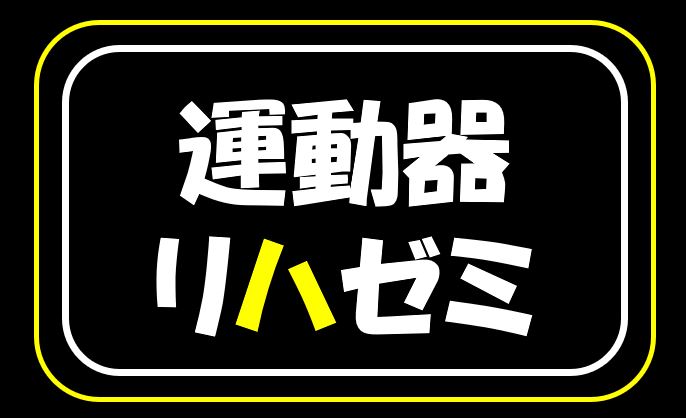こんにちは!
運動器専門のリハビリスタッフです!!
いつもお世話になります。
今回は、『大腿骨近位部骨折後の大腿四頭筋に対する電気刺激の効果は?』について解説させていただきます。
『大腿骨転子部骨折術後例で小転子が転位していると運動機能はどうなる?』
日本は超高齢社会に突入し、高齢者の4大骨折のひとつである大腿骨近位部骨折も今後さらに増加傾向になることが予測されます。
リハビリのひとつに物理療法でもある電気刺激治療がありますが、様々な分野で効果を発揮しています。
そんな中2008年に、大腿骨近位部骨折後の大腿四頭筋に対する電気刺激の効果を検証している英論文が報告されています。
電気刺激療法は施術者の技量が関係なく誰でも同じ効果が出せるといったメリットがありますので、内容がとても気になるところです。
◆論文紹介
Randomized Controlled Trial
Aging Clin Exp Res (IF: 3.64; Q3)
. 2008 Feb;20(1):62-6.
doi: 10.1007/BF03324749.
Randomised controlled trial of electrical stimulation of the quadriceps after proximal femoral fracture
大腿骨近位部骨折後の大腿四頭筋に対する電気刺激の無作為化比較試験
Virginia Braid 1, Mark Barber, Sarah L Mitchell, Brendan J Martin, Malcolm Granat, David J Stott
Affiliations expand
- PMID: 18283230 DOI: 10.1007/BF03324749
Abstract
Background and aims: Proximal femoral fracture is often associated with long-term residual disability. Quadriceps weakness may be a factor in poor outcome. This study aimed to determine whether training of the quadriceps using electrical stimulation (ES) increases leg extensor power and decreases disability in elderly subjects rehabilitating after fracture.
概要
背景と目的 大腿骨近位部骨折は長期にわたる後遺障害を伴うことが多い。大腿四頭筋の筋力低下は予後不良の要因となりうる。本研究では,骨折後のリハビリを行っている高齢者を対象に,電気刺激(ES)を用いた大腿四頭筋のトレーニングが下肢伸筋力を増加させ,障害を減少させるかどうかを検討することを目的とした。
Methods: A single-blind randomized controlled trial of elderly postsurgical proximal femoral fracture patients, comparing 6 weeks of supplementary electrical stimulation of the quadriceps (15 patients) to usual physiotherapy alone (11 patients). The electrical stimulation on:off duty cycle was 7:23 seconds, with 36 cycles per session, given daily as an in-patient and twice weekly after discharge. The primary outcome measure was change in leg extensor power (Nottingham Power Rig). Functional mobility (Elderly Mobility Scale), disability (Barthel Index) and health status (Nottingham Health Profile) were also measured.
方法は以下の通り。高齢者の大腿骨近位部骨折術後の患者を対象に、6週間の大腿四頭筋への補助的な電気刺激(15名)と通常の理学療法のみ(11名)を比較した単盲検の無作為化対照試験。電気刺激のオン・オフのサイクルは7:23秒で、1回あたり36サイクルを、入院中は毎日、退院後は週2回行いました。主要評価項目は、下肢伸筋力の変化(Nottingham Power Rig)。また、機能的可動性(Elderly Mobility Scale)、障害(Barthel Index)、健康状態(Nottingham Health Profile)も測定した。
Results: There was no significant difference in change in leg extensor power, or any other outcome measure, in the ES group compared to usual care controls. Fractured leg extensor power increased by 10.9 (standard error of the mean 2.1) Watts at 6 weeks in the ES group compared to 15.3 (5.5) in the controls (mean adjusted difference -3.1, 95% CI -7.8, 1.6 Watts). Only 3 (20%) of the intervention patients tolerated sufficient stimulation intensity to produce repetitive knee extension, while 11 (73%) sustained palpable or visible contractions with no leg movement.
結果 ES群では、通常ケアの対照群と比較して、下肢伸展力の変化やその他のアウトカム指標に有意な差はなかった。骨折した脚の伸筋力は、対照群の15.3(5.5)ワットに対し、ES群では6週間後に10.9(平均の標準誤差2.1)ワット増加した(平均調整差-3.1、95%CI-7.8、1.6ワット)。介入患者のうち3名(20%)のみが、反復的な膝の伸展を起こすのに十分な刺激強度に耐えられたが、11名(73%)は脚を動かさなくても触ったり目で見たりできる収縮を維持できた。
◆論文の結論
Conclusion: A 6-week program of electrical stimulation of the quadriceps did not increase leg extensor power, or reduce disability, in elderly patients rehabilitating after surgical fixation of proximal femoral fracture. In many patients local discomfort limited the intensity of electrical stimulation that could be delivered.
結論 大腿骨近位部骨折の外科的固定後にリハビリを行っている高齢者において、大腿四頭筋への6週間の電気刺激プログラムは、下肢伸展力を増加させず、障害も軽減しなかった。多くの患者では、局所の不快感が電気刺激の強さを制限していた。
◆まとめ
上記論文では高齢者の大腿骨近位部骨折術後患者を対象に、6週間の大腿四頭筋への補助的な電気刺激(15名)と通常の理学療法のみ(11名)を比較しております。
入院中は毎日、退院後は週2回行っております。
評価項目は、下肢伸筋力の変化(Nottingham Power Rig)、機能的可動性(Elderly Mobility Scale)、障害(Barthel Index)、健康状態(Nottingham Health Profile)です。
結果として、電気刺激群は、通常ケアの対照群と比較して、有意差はなく下肢筋力の増加や障害の軽減効果は得られなかったそうです。
補助的に電気刺激を使用することで、多少の効果は得られそうな気がしていましたが、意外な結果でした。
この論文から解釈すると大腿骨近位部骨折術後患者のリハビリでは、電気刺激治療は使用せず、通常の運動療法プログラムのみで良さそうです。
今回は、『大腿骨近位部骨折後の大腿四頭筋に対する電気刺激の効果は?』について解説させていただきました。




コメント